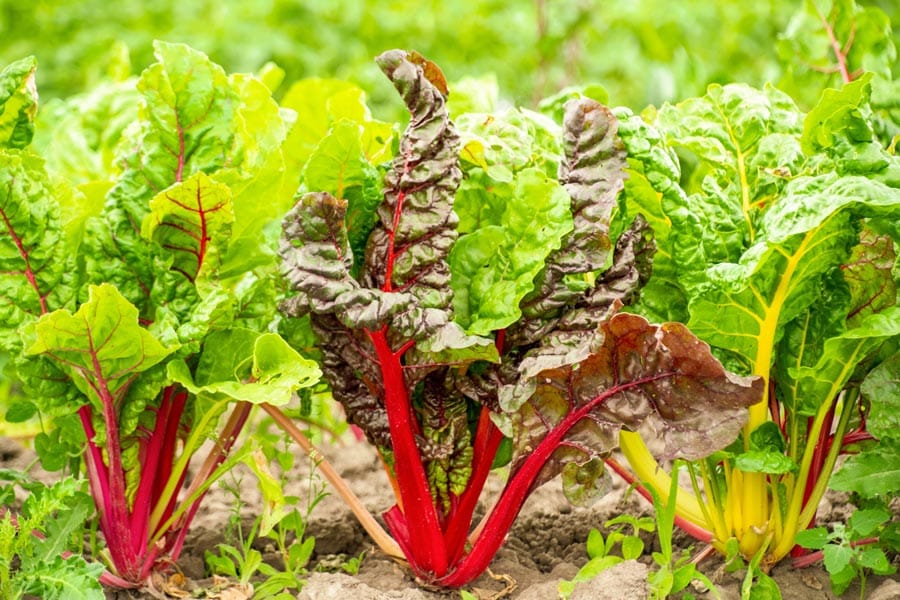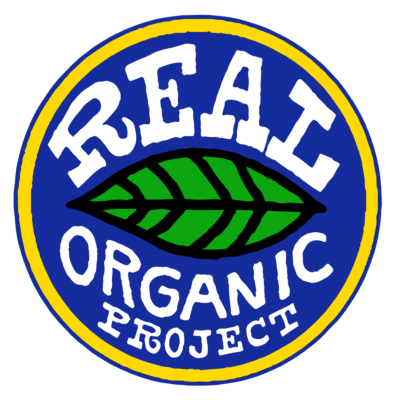
It was a spirited discussion around the lunch table at Gwenyn Hill Farm that got me thinking. There were four of us, all working on a certified organic farm, yet there were four opinions about the value of the certified organic label. Over my decades in farming, I’ve taken an unwavering stance on the label’s importance. Earning the right to display the organic seal has made me nothing but proud. It says everything about how I raise my crops or livestock, and you don’t have to take my word for it. An independent third party verifies it each and every year. So why the differences in opinion? It was time I took a critical look.
A Little History of the N.O.P. – National Organic Program
Aware of problems caused by conflicting organic labels and regulations, Vermont Senator Leahy, then chair of the Agriculture Committee, included the Organic Foods Production Act (OFPA) in the 1990 Farm Bill. It set the ground rules for what became the National Organic Program. There were three broad stipulations: set nationwide, uniform regulations, establish an advisory board of citizen stakeholders, and develop a system of annual inspections. After ten years of public debate, the N.O.P was born, and the final rule was written. With a mixture of hope and trepidation organic farmers turned over a grassroots movement to the federal government. There was cautious belief that through uniformity, transparency, and citizen input, the organic sector would gain legitimacy and move from fringe bulk bins to America’s kitchen table. Indeed, today 82% of households buy organic products, a $50 billion industry.
Along the Way
To maintain integrity the N.O.P. would need the farmers’ vigilance. In the early days the threats seemed to come from conventional producers and processors who wanted to cash in on the higher prices certified organic products could command. For example, powerful poultry producers sought to loosen the requirements for 100% organic feed by convincing their home-state legislators to include an exception to the rule in an omnibus bill to be passed, literally, in the dark of night. Organic stakeholders were in the know, and rallied to defend the 100% feed regulations. Cheap, non-organic feed would not be allowed.

Eventually, the threats to organic integrity started coming from within the industry; from large, organic corporate interests. An erosion of the spirit of the law on many fronts was taking place and the consumer was hearing about it. Mega-dairies were skirting the pasture requirement and feeding fraudulent, cheaper, imported grain to animals that were mostly confined. Organic egg operations were bending the definition of outdoor access to include tiny porches bereft of anything that would attract a hen to go outside. There was no feed, water or grass to be found out there. Meanwhile, family scale farmers who embraced the original intent of organic farming were, more and more, finding themselves at an economic disadvantage and finding that the USDA was turning a blind eye to the situation.
Arguably, the most blatant example was the certification of hydroponic production. The OFPA was drafted with the assumption that farming involved soil. Many demands are placed on the farmer in regard to soil. A farmer must manage soil organically for three years before claiming certified status. The farmer must continue to manage the soil in a way that improves or maintains its health through crop rotations, applications of natural fertilizers, and the use of cover crops; all practices that are costly in time and resources. Enter hydroponics, a soil-less production system. Many farmers assumed that without soil, the foundation of organic agriculture, one would not be eligible for certification. However, after years of debate, and a narrow one-vote margin of the citizen advisory board, the USDA ruled that hydroponics were allowed and the many requirements for managing soil simply didn’t apply to them. The economic playing field for produce production was just upended. Additionally, labels did not need to identify hydroponic products, so the consumer would be kept in the dark.
Fast Forward to Today
 This ruling about hydroponics created a rebellion within the organic community, a final straw. The Center for Food Safety, along with eight organic pioneer farms, sued the USDA. In 2021 they lost the fight in federal district court. Organic hydroponic production was upheld.
This ruling about hydroponics created a rebellion within the organic community, a final straw. The Center for Food Safety, along with eight organic pioneer farms, sued the USDA. In 2021 they lost the fight in federal district court. Organic hydroponic production was upheld.
While the lawsuit wound its way through the courts, the rebels also started a new label to help consumers identify producers who were farming in the way widely understood as “organic”. Ruminants on pasture, plants in the soil, all livestock in the sunshine, and grains with documentation proving authenticity; these are the main tenets of the Real Organic Project label.
This year Gwenyn Hill Farm will apply to be one of the Real Organic Project farms. If our customers and employees have doubts about the organic seal, shouldn’t we take action? I want to proudly display a label proving that we walk the “real organic” walk. At Gwenyn Hill we are dedicated to organic farming practices and that will never change. In fact, to use the Real Organic Project seal you must, firstly, be certified organic by the USDA. The Real Organic Project seal, in my mind, addresses what seems to have faded under the management of the National Organic Program by the USDA. The three central principles of uniformity, transparency and citizen input have been diminished. Without them the value of certified organic will continue to diminish.
We are not abandoning our organic certification. Valiant efforts continue by members of the NOSB and citizen watchdog organizations to work with the USDA to improve the only legally recognized use of the word organic and its green and white seal. An important victory was won this past week when the “Origin of Organic Livestock Rule” was finalized. It closed a 10 year loophole that essentially allowed organic dairy farmers to replace organic cows with non-organic cows. Family scale dairies fought for years to close the loophole that advantaged mega-dairies and that was clearly not the intent of the organic rule. In the ensuing ten years the organic dairy industry has gone from two dairies with 4,000 or more cows to more than 15 mega dairies. A single dairy in the state of Texas produces more organic milk than all the organic dairies in Wisconsin combined. I hope the hard-won victory isn’t too little, too late.
The integrity of organics and its label is complex. There are so many smart, dedicated, defenders of organics that I can’t pretend to explain the nuances nearly as well as they. If you want to know more, consider these resources:
- Linley Dixon, The Real Organic Project Co-Director’s April 1 letter about the Origin of Organic Livestock Rule.
- Cornucopia Institute, a non-profit watchdog that regularly holds the USDA’s feet to the fire, and provides information to consumers about organic producers.
- A bigger picture conversation (Podcast) between Michael Pollen, author of many books about food, and Dave Chapman, Co-Director of the Real Organic Project.
- Colleague and fellow organic farmer, Francis Thicke’s powerful and informative farewell letter upon his departure as president of the National Organic Standards Board.
- National Organic Coalition, a non-profit lobbying organization, reports on NOSB meeting highlights, an insight into the process of accepting citizen input about a federal program.
By Linda Halley, General Manager, Gwenyn Hill Farm.
Linda earned the right to use “certified organic” for the first time in 1993, seven years before the National Organic Program became law.
